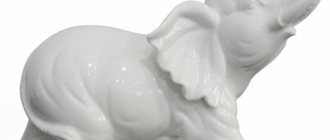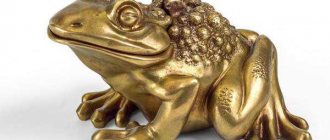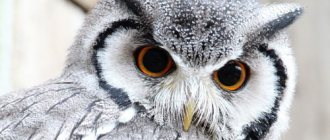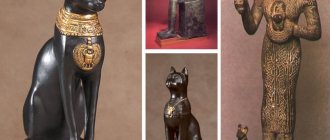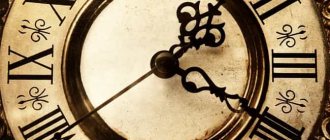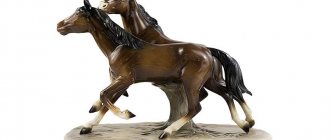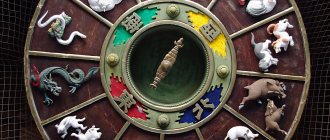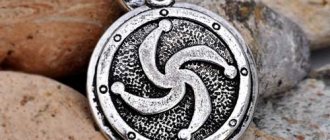| ———— Has a higher symbolic status in the East than in the West. The ability to imitate and a variety of forms of behavior. Symbolism is controversial and is usually associated with various aspects of human behavior. Stories about monkey kings, dexterous and intelligent heroes, are found in Chinese and Indian myths. Ugliness and trickery, has the ability to transform, apotropaic. Common monkey (small, with a tail) Shamelessness, persistence, maliciousness, lower instincts. Dog-headed monkey/baboon (large, tailless) Revered in Ancient Egypt (baboon), Africa, India and China. Basic values: |
Egypt
Monkeys (primarily baboons and frilled baboons - hamadryas) were treated with deep respect: the Nubian tribes had to supply them as tribute. They were believed to understand human speech and were capable of learning more than some students.
The monkey was worshiped and considered the patroness of art and music.
Ibis-headed Thoth, the god of wisdom, was often depicted as a wise old baboon. He is a symbol of courage and knowledge, the patron of enlightened people, recording the speeches of the creator god Ptah and the verdict of Anubis after weighing the souls of the dead. In the early period there was an independent baboon god called “Great White” (Khesur), who was already considered one of the forms of the god Thoth in the pyramid period. He was the protector and patron of scribes and sacred texts. Often there are images of a baboon sitting on the shoulders or on the head of a scribe.
Monkeys sitting under a stream of water pouring from pipes are a symbol of Thoth as the god of chronology: this figurative connection from time is based on the observation that this animal urinates with “astronomical” regularity - exactly twenty-four times a day ... We can say that monkeys was "mankind's first water clock."
The connection between monkeys and the sun is better known: their cry at dawn was interpreted as reverence and prayer to God. The rising sun and baboons are often depicted with their front paws raised in greeting. Sometimes the eight gods of the Ogdoad were depicted in this form; The sunrise serves as a symbol of the creation of the world.
Thoth was probably originally a lunar deity, so it is not surprising that baboons are often depicted carrying the moon disk on their heads.
Cult meat
Monkeys are believed to be very smart animals.
They have a large brain - a recognized delicacy in Africa, China, and South Asia. According to eaters, animal meat conveys wisdom, a sense of humor, wit, and remarkable memory. Ancient Chinese mythology conveys the ability to run fast from the meat of a great monkey. One of the Japanese fairy tales tells that the illness of the wife of the underwater king was treated with monkey liver.
China
In southern China and Tibet, families proudly traced their ancestry to monkey ancestors who allegedly kidnapped women and had children with them. Bodhisattva Avalokiteshvara (incarnated as the Dalai Lama) originally appeared in the form of a sacred monkey (hu), who showed compassion for the giantess, from whose marriage the six ancestors of the people of Tibet descended.
In the Chinese tradition - mischief, vanity, desire to imitate.
The famous Sun Wu-kung accompanied the Buddhist pilgrim Hsuan-chiang on his travels across India, and at the same time, along with great feats, she committed many tricks.
Due to the similarity of sound, images of a monkey on a pine tree or on a horse served as a wish for high social status.
Often the monkey was depicted with a “life-giving peach.”
The ninth animal of the Twelve Earthly Branches (Chinese zodiac), associated with summer and Metal; a symbol of resourcefulness, optimism, diplomacy, stubbornness, and a tendency to speculate. The Year of the Monkey is a time of development, exciting and interesting, favorable for almost incredible undertakings and improvisations.
The gibbon symbolizes maternal care.
The monkey is credited with the power to provide good health, success and protection (5).
“Year of the monkey and month of the donkey” means never.
One of the Three Emotionless Beasts of Chinese Buddhism, greedy, constantly grabbing something. Others: doe - the personification of love passion; tiger - anger.
Monkeys in the mythology and culture of different nations
Monkey Island (China, Nanwan)
In some ethnic groups there are stories that are opposite in meaning to the idea that man is an evolved ape .
According to legends, there were African tribes expelled to the forests for cannibalism, who, growing wild and degrading there, completely lost their human qualities and became ape-like animals.
The Zulus talked about a tribe of monstrously lazy people who, having decided to live off the labor of others, stopped cultivating the land, became covered with wool, and their hoes turned into tails due to lack of use.
Even in ancient Greek mythology, a certain “monkey island” is mentioned, where the Kerkops lived - former people turned into monkeys by Zeus - for their constant vile lies.
In general, the idea of such stories is clear: when a person abandons his own rational nature and violates the rules prescribed to him by the gods, he goes wild . Or rather, he becomes the animal most similar to him - a monkey.
Apparently, this is why in many cultures, especially in the West, this little animal is perceived as a vicious caricature of a person, endowed with a base character and stupid behavior.
In Christianity, monkeys were credited with diabolical malice . It got to the point where medieval artists who “dare to think that they can compete with nature” were depicted as a monkey who decided to become like God.
But there are other options for human relations in this animal, especially in the east...
In the culture of Tibet, it is believed that it from the sacred monkey that their people, namely the six ancestors, descended. Here it is especially honorable to have this totem - your own or tribal. And moreover, the same sacred monkey incarnated as Avalokiteshvara , after which its cycle of incarnations as the Dalai Lamas .
If we use the so-called channeled information, then Jose Arguelles talked about the Universe of intelligent monkeys, led by the noble lord Thutmosis and Queen Hypnesia:
It is inhabited by happy and carefree creatures, where even huge gorillas and orangutans frolic more than playful monkeys.
(José Arguelles "Probe from Arcturus").
In earthly mythology, there is Hanuman , a Hindu ape-like deity who is revered as a mentor in the sciences and who was the son of the Wind God.
The cult of Hanuman is one of the most widespread throughout Southeast Asia, which brings special freedom to macaques. In India and Thailand, many temples have been built where sacred monkeys are revered, which guarantees the local rhesus monkeys safety and uninterrupted feeding:
In Thailand and Hong Kong, the monkey king has names that literally mean “sky-equal monkey” and “spirit monkey.”
The Chinese modern analogue of Hanuman is the “stone monkey” - the traveler and great sage Sun Wukong . This is the literary character of Wu Cheng'en from the novel Journey to the West, who was originally most interested in gaining immortality.
But with all his knowledge and magical skills, Sun Wukong still died “in the battle” with alcohol. In the next world he behaved inconsistently, acquired the character of a trickster: he cheated, stole, had fun, made scandals - in general, he behaved like a typical monkey.
Read more about trickster gods in the article “Gods of Reason and Knowledge.”
The Egyptian deity of wisdom Thoth had a baboon as one of his sacred animals . Later, dressing in this image, the priests of Egypt celebrated celebrations in honor of the pharaohs.
It is worth recalling the monkey style from ancient Chinese culture. This health-improving movement system was developed by the famous doctor Hua Tuo as part of the “Game of Five Beasts”, designed to improve health.
In the martial art of kung fu, the monkey style combines various techniques of attack and defense, characterized by reaction speed, flexibility, activity and resourcefulness. A person who wants to master this fighting style gets used to the character of the monkey, with its characteristic manifestations:
- she jumps quickly and turns around;
— she easily grabs, strikes, hangs;
- she hides and dodges as if she were in a dense forest;
— she is flexible and alert, but her body is relaxed;
- she feels confident among dangers and difficulties;
- she “plucks the heavenly fruits” (the legendary heavenly peaches), as if she were busy with the most ordinary thing;
- she sees everything that is happening around her, and is ready to immediately hide in case of danger.
Another exotic point, supposedly inherent in some Eastern and African cultures, is eating monkey brains (this dish is believed to help restore sexual male power).
You could have seen a similar episode in the movie “Indiana Jones and the Temple of Doom”
However, in reality, the custom of eating a monkey's brain is:
- or is not confirmed in popular food culture, as it may be outdated and too exotic;
- or as expensive as possible and carried out illegally;
- or is used as purely ritual dishes among a very small number of peoples.
Japan
Toy monkeys are considered mascots that protect children.
"Cochin" - three Mystical Monkeys whose mouth, eyes and ears are closed. A wooden carving of them is found in the temple of the first Tokugawa shogun in Nikko. In Japanese, the words for "monkey" and "do nothing" sound the same - "zaru". Therefore, the whole group conveys the phrase: “I see no evil (The definition of “evil” is often used, not “evil”...), I hear no evil, I do not speak of evil” and symbolizes the conscious renunciation of bad deeds and wise caution. Such carvings were also considered a talisman that protected against slander. The popular interpretation of this image in the West: “see nothing, hear nothing, say nothing” is completely wrong.
Initially, it was about spies sent by the gods to people to find out about their affairs. A means of protection against such tracking was supposed to be images of blind, deaf and dumb monkeys.
Origin of the symbol
The figurine’s hometown is Nikko, which is located 150 kilometers from the capital of Japan – Tokyo. The Japanese love this place, and this is not surprising - the Tosho-gu Shinto shrine is located here. It is a stunning complex of carved buildings - a true masterpiece of wood carving.
It is not for nothing that Tosho-gu is included in the UNESCO World Heritage List. But another attraction is the stables. It is here that the carved sculpture “San-zaru” has been displayed above the door since the 17th century. Its author is Hidari Jingoro, the man thanks to whom the three monkeys became known to the whole world.
In Japan people generally love monkeys. In this country, they are considered wise animals, personifying resourcefulness and leading to success.
You can often see a sculpture of a monkey - Migavari-zaru - near houses. In another way, it can be called a double of a monkey. It drives away evil spirits, evil spirits that can attract misfortune, illness, and injustice.
Mesoamerica
Calendar and fortune-telling symbol in ancient Mexican cultures, the 11th day sign (in Aztec - otsomati or ozomatli; in Maya - batz). The monkey was considered the god of play and dance, and those born under this sign were expected to become jesters, buffoons, dancers or singers.
A symbol of fun, jokes, joy of life, common sense and audacity. Among the Mayans, it is a symbol of rude feelings, barbarism and vices (laziness) characteristic of the third era.
The Mayan God of the North Star had the head of a monkey.
In Ancient Mexico, the monkey has an unclear symbolic connection with the wind.
Successive eras or “Suns” ended with periodic doomsdays: the period of the “Sun of Water,” for example, ended with a flood, and the second era or “Windy Sun” ended with devastating tornadoes. The people of this (???) era turned into monkeys.
Monkey totem and its manifestations
People who have a monkey as their main totem are distinguished by very flexible facial expressions, with the help of which they can express a huge range of emotions and reactions.
Comedian Yuri Askarov
They can also move very deftly and efficiently - in three dimensions at once. Their legs may seem to bend, twist and spring, and their arms are longer than those of other people.
In childhood, monkey children can be very nimble, they are drawn to climb anywhere and everywhere , because they are curious and restless. They grasp very well the features of other people's character and manifestations, are able to imitate other people, make faces, imitate habits and voice.
They have a penchant for other languages and cultures, love to travel, and try everything. They are better than others at creating panic “on the ship”, initiating chaos and confusion.
In their youth they love to show off, they easily become popular, they are great at imitating someone brighter and stronger.
In their personal lives, they may seem superficial and even immoral due to their love of play, changing impressions and sexual promiscuity. Both men and women are not shy about anything, they, as they say, have no complexes . They are surprised that anyone is wired differently.
Although your partner will think that such a person is easy to tame and has an easy character, in reality he has simply merged into your reality, fit into someone else's life. As long as it is convenient or fun for him . Or until something more attractive or interesting appears, a new challenge, a new game. They can also live at the expense of their partners, society.
Representatives of this totem are very fond of variety and an accelerated pace of life - what may seem too chaotic and disorderly to many is normal for them. They often have brilliant abilities, a lot of projects that result in many started and unfinished tasks.
Suitable professions for them are gaming, primarily any stage activity (models and actors) and fine arts.
Donald Wilson - author of the picture
Another professional aspect is the secret service workers who know how to transform, disguise themselves, take on any image, and fit into a new society.
They make popular public figures, politicians who easily confuse others, showing intriguing abilities and the qualities of behind-the-scenes leaders.
They find themselves in the role of testers and researchers, whose insatiable curiosity for new things leads them forward and forward.
At the usual level, they are shown to work in the service sector - they are excellent bartenders and waiters.
Important : a person with a monkey totem must always keep himself under control , otherwise there will be a scattering of talents and degradation in the second part of life. There is a danger of turning from a man into a monkey.
They cope poorly on their own because they are rarely endowed with a sufficiently strong mind, will and awareness.
Written by Gabriel Cornelius von Max
If they are unable to learn self-control, then they will have:
- a rather cool partner (parental type), to whom they were intuitively attracted and remained close to him;
- a boss who will set goals for them and keep them in such a way that “you won’t spoil them”,
- egregor with a rigid ideology, order and hierarchy.
And finally, anyone can use the monkey totem as an additional one if they want:
- faster and easier to relax in relationships;
- become livelier and more artistic;
- learn ease and switchability;
- speed up your reaction to the world around you - for example, so as not to miss the right chances...
On the topic - the section TOTEMS.
Also tips “How to find out your totem?” and the help of an astrologer in this.
Tags: Talismans and amulets, Totems of birds and animals
- Related Posts
- The bull is the symbol of 2021
- Butterfly - symbol and totem
- Ant - symbol and totem
Hinduism
Sacred animal. A symbol of strength, loyalty and self-sacrifice.
The personification of goodwill and tenderness.
Symbol of the soul.
Indian farmers suffer from monkey attacks...
Hanumam Jayanti, Hanuman's birthday.
Hanuman, Indian monkey god, son of the wind god Vaiya, warrior, faithful companion and minister of Rama. Possesses divine strength, known for his knowledge, agility, speed, and loyalty to Rama, whom he protects while fleeing from the giants (symbolizing the hard work of rebirth). Symbol of fertility and healing.
Religious cults
The deification of primates is expressed in the depiction of gods in their appearance. The river deity Wuzhiqi in ancient China had the body of an animal. In Buddhism, the monkey is a vulnerable embodiment of the Buddha, but can also represent ugliness, deception, greed, and insatiability in satisfying sensual desires.
In Hinduism, Rama's companion is considered to be the monkey-like god Hanuman (who has a broken jaw), who is endowed with enormous strength and the ability to fly, change size and shape. The god of thunderstorm Indra (Slavic Perun) broke the jaw of a little idiot by throwing a spear. Being the son of the wind god Vayu, Hanuman symbolizes the gift of healing and fertility.
In India, there are still temples where monkeys live as a sacred animal. Macaques that have infested the states of India and cause a lot of trouble for people, however, they remain untouchable for local residents.
Christianity
It is viewed negatively, as a caricature of a person and the embodiment of such vices as:
- coquetry (with a mirror in hand),
- greed (greed) and
- criminal intentions.
Deceit, malice, cunning, lust (licentiousness, lust, passions), sin (vice), obscenity, frivolity, vanity, love of luxury, idolatry (idolatry) and heresies.
A symbol of an obscene, shameless person.
It can symbolize the negligence of the human soul - blindness, greed, a tendency to fall into sin.
In chains (entangled) - means overcome sin (defeated devil), victory of faith and virtue.
"Physiologus". ... was portrayed as insidious, but prone to imitation: the hunter pretended to have glue in his eyes and then hid; the monkey descended from the tree, closed its eyes “like a monkey,” and the hunter could easily catch it in a noose. “In the same way, the great hunter, the Devil, catches us. He... brings the glue of sin, blinds the eyes, makes the spirit of man blind, makes a big noose, and it corrupts the soul and body of man.”
In the early Middle Ages - a symbol of the devil (Satan); a designation of paganism rather than sinfulness.
In the Gothic era, a monkey with an apple in its mouth began to symbolize the Fall and in this form appeared in images of the Virgin Mary, the Child and other scenes, for example, in the scene of the worship of the Magi along with other animals.
Three monkeys figurine for activating sectors
Feng Shui masters advise using the three monkey figurine to activate zones in the house in order to achieve good luck and success in different areas of life. If you put it in the partnership sector during periods of misunderstanding, it will help you find a common language and solve the problem of confrontation. If you periodically place the symbol in the fame zone, it will help you establish contact with the right people and, thanks to them, stand out in an important environment.
And occasionally putting it in the knowledge sector will help you learn wisdom when communicating with your own kind, support you in difficult subjects - you will master it faster. If the question arises about where else to place the three monkeys symbol in the house, you should pick up the figurine and listen to your inner voice, intuition will tell you which area of activity requires adjustment with resourcefulness, wisdom, and the manifestation of hidden talents. Feng Shui always supports a creative approach to working with symbols and talismans, based on teaching tips.
In addition to the “three monkeys” figurine, there is a figurine of an animal with peaches in the teachings of Feng Shui. Since in China the peach is a symbol of longevity, such a gift will be received with gratitude. Everyone wants to live to at least 90 years old, and a figurine in a gift is perceived as a wish.
Another figurine of the same animal, but on a horse. Usually they activate the zone of fame or career, with a hint of rapid movement without stagnation forward to the top. Here the symbol has double power, taking into account the horse, which is also used in the feng shui direction.
The image of an animal gives special strength and help to people born under this symbol according to the eastern horoscope.
Emblematics
Attribute:
- allegories of Taste (the five senses) during the Renaissance;
- sanguine (→ Faith, temperaments);
- vanity (along with a peacock and, less commonly, a butterfly;
- vice in general and the personification of Debauchery (→ Savage);
- lust (→ other numerous images).
Often caricatures depict minor flaws in human nature or are an allegory of imitative art. The ability to imitate human behavior was widely used to ridicule vanity and stupidity.
The man recognizable in the monkey in a distorted form is the base image of himself reflected in it.
Since the Middle Ages it has served as a symbol of art, in particular painting and sculpture. The artist's art was considered to be essentially imitation; it became associated with an animal known for its ability to imitate (mimic). This idea is expressed in the popular aphorism “Ars simia naturae” [lat. - “Art is the monkey of nature”], especially loved by Flemish artists of the 17th century. They depicted the artist in the form of a monkey creating a portrait - usually of a woman, but not rarely of a secular man - or sculpting a sculpture from stone. This parody of the artist eventually spread to other types of human activity, and monkeys began to be depicted sitting at the dinner table, playing cards or playing musical instruments, carousing, dancing, skating, etc. Often the place of monkeys is taken by other creatures, especially cats and owls. The artist makes fun of human pretentiousness - stupidity and vanity. The image of an epigone artist.
A monkey strangling its baby in its arms
- Parental love is blind.
Symbol of blind love.
EMSI 18-1, p.177 Monkey emptying a bag of guineas
- There will be no profit from ill-gotten wealth.
The symbol shows us that even a tightly packed beggar's bag is usually thrown into the wind by a wasteful heir.
EMSI 32-3, p.236 Lion devouring a monkey
- I use the fool as medicine.
It is believed that sick lions are treated with the blood of their inveterate enemies - monkeys.
Leos have a bold and open disposition, while monkeys are cunning and arrogant. This symbol can also mean that wise people sometimes communicate with fools not without benefit for themselves. EMSI 26-3, p. 211 In a similar context, the monkey is also mentioned in the commentary to the emblem of the Lion killing the fox
- Valor triumphs over treachery.
It is known that the fox is a symbol of betrayal, cunning and deception, and the lion is a symbol of valor and open nobility. For this reason, the lion has an eternal hatred for foxes, monkeys and wolves, that is, for all creatures with an insidious and treacherous nature. [EMSI 36-12, p.257]
Talismans of other animals in Chinese philosophy
According to phenom teaching, animal talismans are considered the most reliable of all symbols. Therefore, every person strives to have a figurine according to the year of birth and the current year, so that the animal will not be offended and will help in business.
Frog
The frog is considered one of the effective symbols in the teachings of Feng. If you fall in love with the image of this animal, it will definitely help and provide real protection. Take her characteristic - restlessness, quick reaction to danger, and at the same time - trust in people. The frog can demonstrate these qualities with its prototype in residential areas, as an activator of what the owner expects.
There are many myths about the frog, where in each of them it was endowed with special qualities that were not devoid of common sense: it was responsible for fertility, and cured some diseases. And in Indochina, the frog was given a negative image - an evil spirit destroying the moon, then an eclipse occurred.
The teaching of the fen gives the jumper the ability to protect the subject, even to give immortality, about which there is also a myth. The frog can be used live, placed in a terrarium, or in the form of a figurine. And an animal with a coin in its mouth is generally very popular, and usually “lives” in the wealth sector with its face facing the inside of a home or office. It is believed that profit in any form is guaranteed. And monetary energy will always be active. It is best to place the frog in the living room or office. Not allowed in the kitchen, bedroom, bathroom.
Rabbit
In the teachings, the hair dryer symbolizes longevity, fertility, and can bestow an elixir of longevity if you ask a rabbit for it. And the Moon Hare gives protection to children for the future - to create a happy family. The rabbit is considered a dog's best friend, therefore, those born under this symbol must have a rabbit talisman. It will help and protect at the right time.
Bear
Those who want to have strength, health and confidence acquire a bear talisman for themselves. According to fan, it helps to get rid of negative character traits, thanks to which relationships with others change for the better.
But when you get promoted, you will have to change the rules of communication, because the level of your social environment will increase. Actions and behavior will need to be measured against it. The bear talisman, according to Fen teachings, is a good assistant in moving up the career ladder. Men who have it become more courageous, and their level of willpower increases.
Dog
The Taoists have a joke about who came first, the egg or the chicken. The answer is completely unexpected - a dog. In Chinese teaching, feng is a talisman of dogs for goodness and prosperity. In ancient times, Taoists decorated their temples with images of animals. In European countries, a dog is a devoted friend and protector of a person’s home from unkind people. In some countries, it is believed that many dogs should live in a house.
It should be noted that this animal is very sensitive to danger: of a military nature or natural disasters. Dogs are looking for shelter and trying to communicate this to a person. There are many examples in practice. And a specially trained dog saves people, children and even other animals during a fire or flood.
Having an animal talisman with you means having invisible protection in everyday life from troubles of all kinds. The animal figurine can be in the form of a soft toy, but look at the owner at home, and not at the exit. Just like in real life, it is located inside the courtyard. Feng experts attach great importance to this talisman for a person’s life. And the figurine can stand on the desktop, like monkeys, in any place, serving its owner faithfully.
Psychology
Dexterity, cunning.
Monkeys generally symbolize lower powers, darkness or unconscious activity, but this symbolism - like the symbolism of legendary mythical creatures - combines two aspects. On the one hand, this unconscious force can be dangerous, since it can destroy the individual, but it can also provide benefit - like all unconscious forces - when least expected.
Interpreted as a sign of uncertainty and doubt about one’s own role, as well as a symbol of shamelessness.
Is, according to psychological interpretation, any kind of “human-likeness of that which is not yet human,” but wants to reach this stage; “the one who dreams of it approaches this possibility from a side that causes disdain” (Eppley).
Art and nature
Artists of the Middle Ages recognized the image of a monkey as an allegory of fine art, since they considered the creativity of people only an imitation of the creativity of Nature. Monkeys paved the way into space for people, having previously flown around the earth from America. Until now, medical experiments are carried out on animals, using physiological and psychological similarities with humans.
Monkeys are kept as pets, which in some cases act as service animals for the disabled. In tourism and farming, primates often act as pests, causing significant damage to business profitability and human property.
Draft materials
Panther - opposition, natural enemy of monkey, deer.
Various species of monkeys from Africa and South Asia were already known in the ancient world (Greek pithekos, Latin simia); on occasion, monkeys trained by artists were used for “theatrical performances.” Calling a person a “monkey” was considered a curse, for it was a symbol of deceit and ugly appearance. However, monkeys were often kept as exotic pets. There was a belief that possessing a monkey's eye would make him invisible, and that monkey urine spilled at an enemy's door would make others hate him.
Phraseologisms and their meaning
White monkey is an offensive expression, this is what representatives of other races (for example, Asians) called white people, who for them are ugly and are perceived as “all looking the same.”
Monkey's work - this can be called meaningless and useless work, often ineffective, which, moreover, is essentially not needed by anyone.
Monkey with a grenade - this is often used to describe irrational behavior, mainly among women. When a lady thoughtlessly uses something, the danger or complexity of which she does not take into account (does not want or is not able). This phrase is often associated with the behavior of clueless car ladies.
A little more beautiful than a monkey - wise mothers and grandmothers tell their picky daughters and granddaughters that “a man should be a little more beautiful than a monkey.” The moral of this phrase: what is valued in men is not their appearance; you need to pay attention to more important things: character, abilities, the very attitude towards women and family, etc.
Profitable business
Comic scenes with monkeys were common in Flemish painting of the 16th century. According to one of the art historians’ versions, the beginning of this tradition was the famous work of Pieter Bruegel the Elder “Two Monkeys”, which is most often interpreted as a visual parable about the sin of stinginess and the sin of wastefulness.
Pieter Bruegel the Elder. Two monkeys, 1562. Source: wikimedia.org
High consumer demand for such stories has turned them into a profitable business. Around 1575, the enterprising engraver Peter van der Borcht included figures of monkeys in a separate series of graphic works. The series was a great success, cementing the popularity of sengeri.
Pieter van der Borcht. Nursery, approx. 1575. Source: wikimedia.org
Further, interest in this genre of bourgeois customers increased after the creation of the East India Company in 1600, which led to the appearance of previously unknown exotic breeds of monkeys in Europe. Franc Franken the Younger, Sebastian Vrankx, and Jana van Kessel the Elder made good money on the sengerie.
But the main popularizers of monkey tricks are the Flemish masters David Teniers the Younger and his brother Abraham. Complexly composed and multi-figured compositions reveal the contradictory duality of human animal nature. How do you like a hair salon where helpful monkeys groom imposing cats?
Abraham Teniers. Barber shop with monkeys and cats, between 1633 and 1667. Source: wikimedia.org
But the stern class teacher at the monkey school gave a demonstrative flogging as a warning to the careless students. The execution is watched by an open volume on the desk - a catechism or Latin grammar. Another book, deliberately placed in the foreground, is a hint of the inability to properly manage knowledge.
David Teniers the Younger. Monkey School, ca. 1660. Source: wikimedia.org
The monkey guardhouse performed by David Teniers copies a realistic scene of soldiers relaxing over cards and wine. A pinch of drama is given to it by the appearance of the night watchmen, who detained the frightened cat to death. The funnel on the head of the captain’s mate and the bowler instead of a hat on one of the soldiers hint at the illegality of the behavior of those gathered, referring to the well-known image of “fools in power.”
There is also a version that this painting and the work of Sebastian Vranx are a veiled criticism of the abuse of power by the military in the Southern Netherlands at that time.
David Teniers the Younger. Guard room with monkeys, ca. 1633. Source: wikimedia.org
Sebastian Vranks. Allegorical fight between armed monkeys and cats in a Flemish landscape, c. 1630. Source: wikimedia.org
Then Nicholas van Verendaal continued the glorious monkey tradition. He collaborated with David Teniers the Younger in Antwerp and was well acquainted with works of this kind. Sometimes you can’t tell right away whether people or monkeys are depicted.
Nicholas Van Weerendaal. Feast of the Monkeys, or The King Drinks, 1686. Source: wikimedia.org
